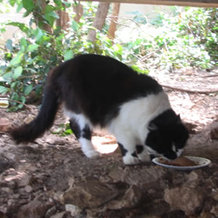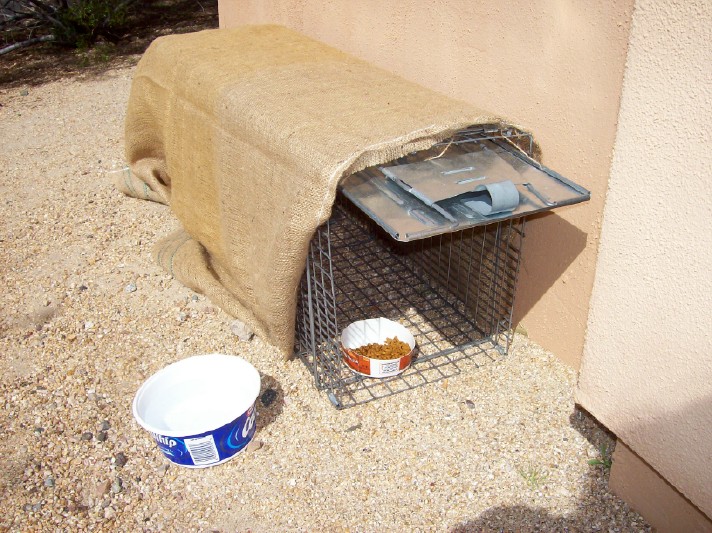
What Do You Do?
By Cathy Grovenburg
Kitten season is upon us! It seems that everywhere you turn, there are kittens, and pregnant cats. What can you do to help?
First, let me share some sobering facts:
By Cathy Grovenburg
Kitten season is upon us! It seems that everywhere you turn, there are kittens, and pregnant cats. What can you do to help?
First, let me share some sobering facts:
- In this climate, cats will cycle into heat and deliver litters of kittens up to three times each year.
- Cats can cycle back into heat within 6-8 weeks of giving birth, and in rare occasions, can cycle back into heat within one week of giving birth.
- Kittens as young as 4 months of age can cycle into heat and become pregnant.
- Over the span of eight short years, an unspayed female cat, her mate and their offspring, producing two litters per year, with 2.8 surviving kittens will add up to 2,072,514 kittens.

If you would like to do something to help this season, here is what you can do:
If you see a litter of kittens in your backyard or shed or in some bushes, leave them alone! Do not scoop them up and take them to your local shelter or attempt to nurture them yourself. Cats instinctively will move their kittens several times - when they feel unsafe, when they want to be in a warmer, more protected location or when they want to be relatively close to a food source. If the mother cat gets interrupted during one of these moves, she may leave a kitten(s) behind. Rest assured, she is not far away, and as soon as she can safely return, she will come back for the kittens. If you come across a nest of kittens, just leave them alone and let the mom continue to care for them.
Do not remove the mother and litter of kittens and relocate them to a “safer” place. Community cats/ferals feel safest in their home environment. Any changes to that will likely stress the mom and may cause her milk to dry up, leaving you with hungry or starving kittens and a very unhappy mother cat. Additionally, keeping the mother cat from her colony for a prolonged period of time may place her at risk of being accepted back into the colony at a later date. So, before you act on that impulse to help the mother cat by relocating her and her kittens, ask yourself the following questions: 1) Do you have a safe and quiet space that can accommodate the mother and kittens for up to eight weeks or longer? 2) Can you tolerate the fleas that will most certainly come with the mother and kittens? 3) Are you comfortable working with and caring for an adult feral cat that may be especially stressed or anxious due to the circumstances? 4) Do you have a backup plan in the event that this doesn’t work out? If your answer is “No” to any of these questions, do yourself, and the mother cat and kittens a favor. Leave them where they are.
If you see a litter of kittens in your backyard or shed or in some bushes, leave them alone! Do not scoop them up and take them to your local shelter or attempt to nurture them yourself. Cats instinctively will move their kittens several times - when they feel unsafe, when they want to be in a warmer, more protected location or when they want to be relatively close to a food source. If the mother cat gets interrupted during one of these moves, she may leave a kitten(s) behind. Rest assured, she is not far away, and as soon as she can safely return, she will come back for the kittens. If you come across a nest of kittens, just leave them alone and let the mom continue to care for them.
Do not remove the mother and litter of kittens and relocate them to a “safer” place. Community cats/ferals feel safest in their home environment. Any changes to that will likely stress the mom and may cause her milk to dry up, leaving you with hungry or starving kittens and a very unhappy mother cat. Additionally, keeping the mother cat from her colony for a prolonged period of time may place her at risk of being accepted back into the colony at a later date. So, before you act on that impulse to help the mother cat by relocating her and her kittens, ask yourself the following questions: 1) Do you have a safe and quiet space that can accommodate the mother and kittens for up to eight weeks or longer? 2) Can you tolerate the fleas that will most certainly come with the mother and kittens? 3) Are you comfortable working with and caring for an adult feral cat that may be especially stressed or anxious due to the circumstances? 4) Do you have a backup plan in the event that this doesn’t work out? If your answer is “No” to any of these questions, do yourself, and the mother cat and kittens a favor. Leave them where they are.

Provide high quality food and fresh water for the mother cat, ideally putting out food and water twice daily, and at the same time(s) each day.The cat will acclimate to the routine, and will bring her kittens to the food source when they approximately 4 weeks old. That is the perfect time to pull the kittens, socialize them and begin looking to find them a good home once they are altered. It is also the best time to get the mom in and spayed – before she becomes pregnant again. If she is friendly, place food in a cat carrier, and close the door behind her when she enters to eat. If she is feral, use a humane cat trap to capture her. (See the end of this article for an array of low cost/no cost spay/neuter options for Santa Clara County residents.)
Have the kittens spayed/neutered before you send them off to their forever, adoptive homes. Kittens can safely be altered once they weigh two pounds, which is at approximately eight weeks of age. Shelters are required by law to have kittens altered before they are adopted, so routinely perform spay/neuters at 8 weeks of age. Kittens recover quickly at this younger age and studies show no ill effects of spaying early in kittenhood. Moreover, kittens can cycle into heat as young as four months of age, so having them altered at 8 weeks ensures that there are no future “oops” litters of unwanted kittens born.
Have the kittens spayed/neutered before you send them off to their forever, adoptive homes. Kittens can safely be altered once they weigh two pounds, which is at approximately eight weeks of age. Shelters are required by law to have kittens altered before they are adopted, so routinely perform spay/neuters at 8 weeks of age. Kittens recover quickly at this younger age and studies show no ill effects of spaying early in kittenhood. Moreover, kittens can cycle into heat as young as four months of age, so having them altered at 8 weeks ensures that there are no future “oops” litters of unwanted kittens born.
Santa Clara County residents are fortunate to have a large number of affordable resources available to them for spay and neuter. Please visit the following websites to get detailed information on low cost spay and neuter options or call the PAWS hotline for advice at 877- 729 -7475 (877-PAWS4SJ).
www.cityofpaloalto.org
www.hssv.org
www.peninsulafixourferals.org
www.sanjoseanimals.com/spayNeutInfo.asp
www.sccgov.org/sites/acc/spayneuterprogram
www.svaca.com
www.cityofpaloalto.org
www.hssv.org
www.peninsulafixourferals.org
www.sanjoseanimals.com/spayNeutInfo.asp
www.sccgov.org/sites/acc/spayneuterprogram
www.svaca.com
Examples of humane feral cat traps:



 RSS Feed
RSS Feed
